Advertising Florida and its charms with flowery words | Sarasota History, Jeff LaHurd
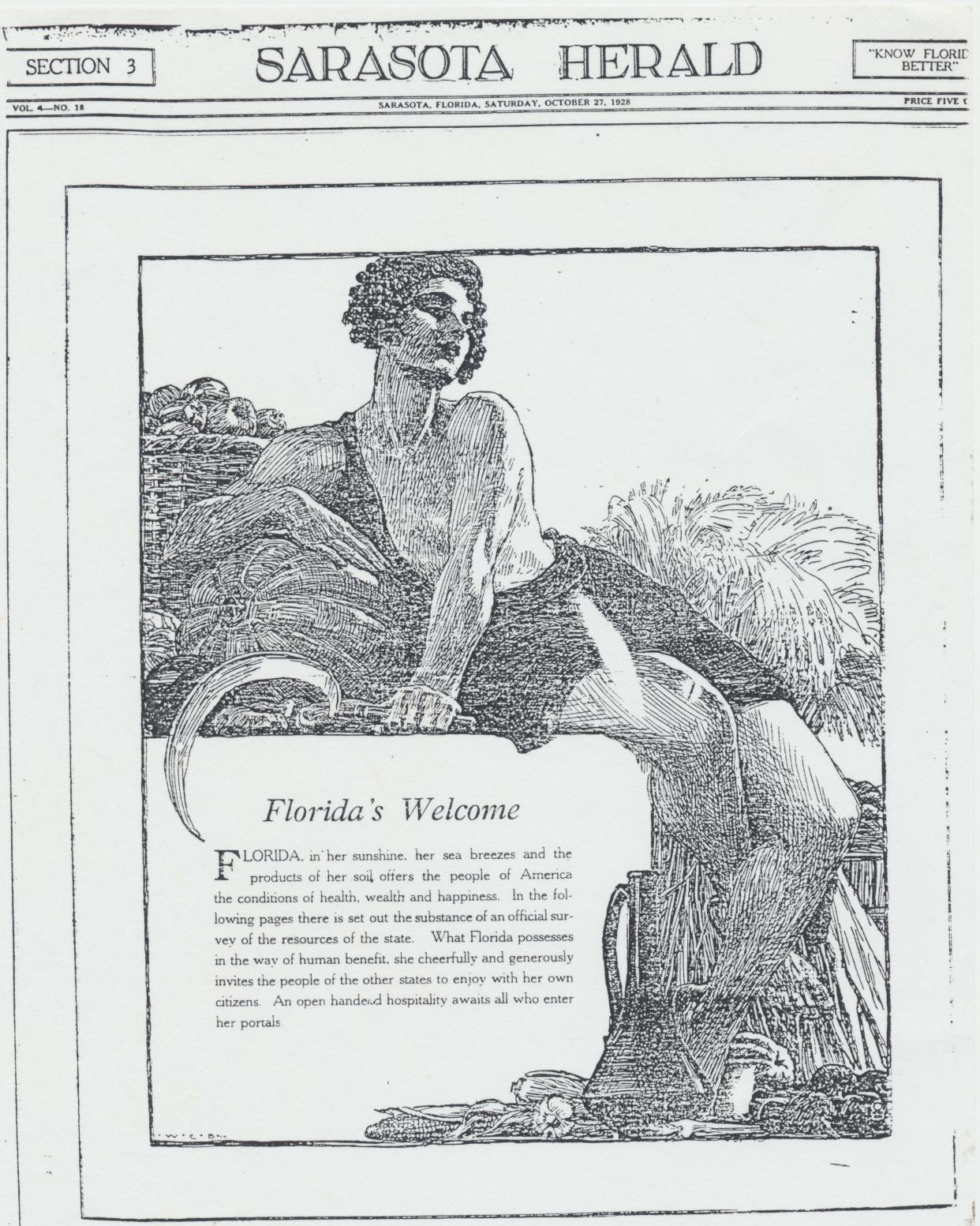
Yesterday’s Sarasota had no color photographs to illustrate the intrinsic tropical beauty of the area, or to showcase the attractiveness of the beaches, or the new Mediterranean and Spanish Mission buildings, or housing developments; nothing but black and white imagery to visualize movie screenings, automobiles, and retail establishments.
That lack, however, was overcome by lovely pen and ink drawings, hand-colored illustrations, and by over-the-top flowery prose and hyperbole.
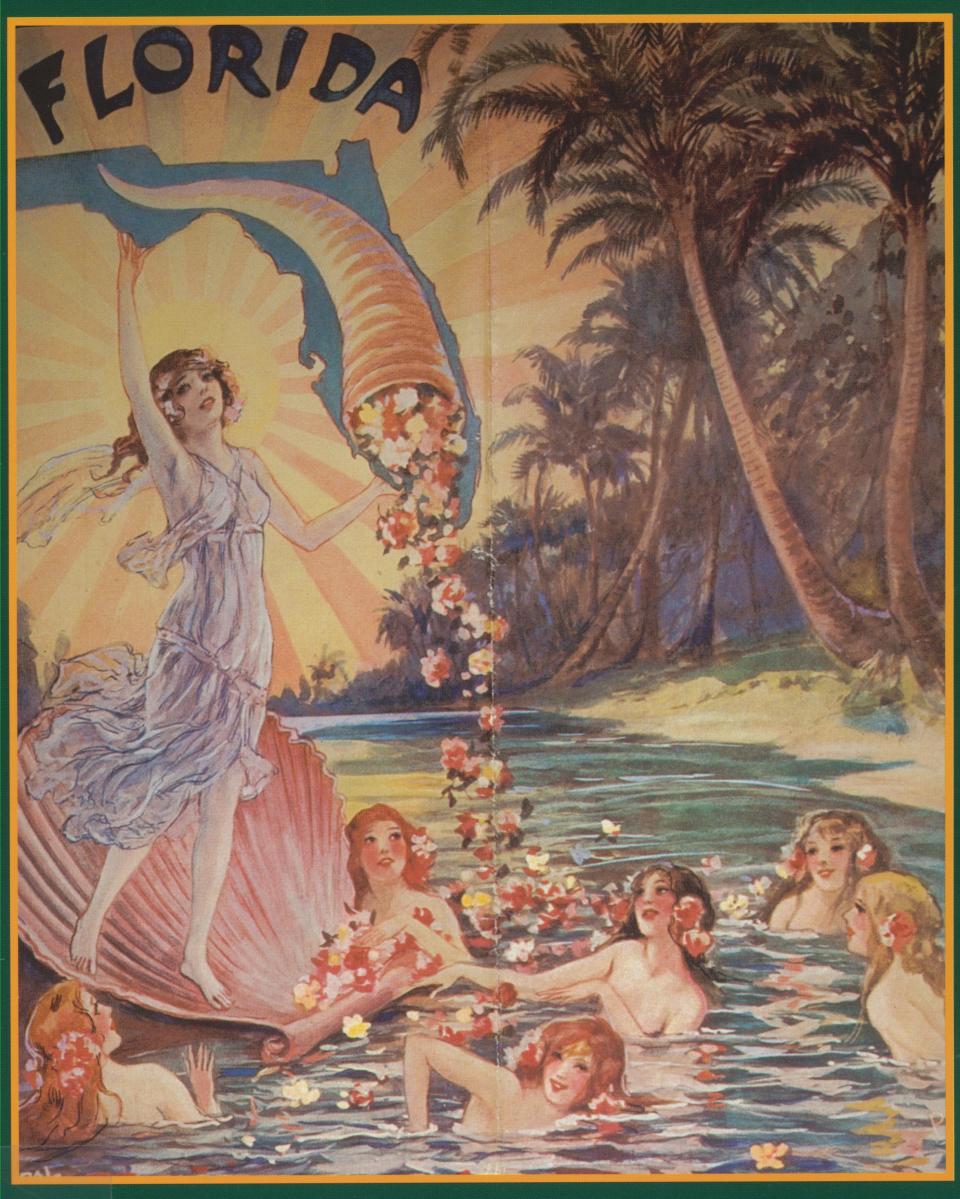
That era’s imaginative writing style might be embarrassing by contemporary standards, but sufficed at the time, and makes for pleasurable reading today.
The big pitch to come to Florida was based on its beauty, weather, the many pleasures of living here, and of course the opportunity to cash in, then as now, on the real-estate craze.
In “Florida in the Making,” the authors reported: “There is hardly a community in Florida large enough to have a post office that has not also a chamber of commerce engaged in the effort to tell the world of superior advantages of that community.”
Florida was described in a nationally mailed brochure as “Bathed in the passionate caresses of the southern sun, laved by the limpid waves of the embracing seas, wooed by the glorious Gulfstream ...”
Each village, town, or city tried one-upmanship to make their area more desirable than any of the others and pull in newcomers.
Vero Beach went with “Transcendent charm, nestling close to the bosom of the great sea, where amid flowers and palms she catches each impulse of inspiration.” Vero invited newcomers “to come, tarry awhile and revel in the beauty of her varied and fascinating scenery.”
Not to be bested, the Sarasota Chamber of Commerce countered with: “It was in the gladness of His dreams that God fashioned the earth and flung it from the hollow of His hand through myriad meteors and the shimmering tracery of the stars. It must have been that he lingered over the effect to be produced in Sarasota County, and for all these years Nature seemed to have rested in raptured contemplation of her rich and varied charms.” WOW! What a place. Pack up the car, Jethro, we’re heading south!
One of the loveliest, and most inspirational descriptions of Sarasota’s beauty ever penned was contained in a letter from Davie Lindsay Worcester to her husband, Thomas, in their hometown, Cincinnati. Davie, who came here for health reasons, paid a visit one day with some friends to Bird Key and the surrounding environs.
Picking her words as an artist chooses colors from a palate, she wrote: “The shore was laden with shells so beautiful, I could not pick them, dear, at first. I felt that my heart would burst on that shell-bestrewn shore. With thousands of palms soaring toward the clouds; at our feet the Gulf of Mexico washing up. This is what I want for my old age. Oh! Words cannot paint the scene; imagination cannot conceive of such grandeur.”
The healthful benefits of living in the Sunshine State inspired St. Petersburg to brag it was the healthiest place in the United States, with “only one undertaker in the city with a winter population of 13,000 people. Whole months go by without a single death.”
In Sarasota, promising prose drew perspective buyers to one of the many housing developments popping up throughout the county.
During the real estate boom, Whitfield Estates was regularly advertised by the Adair Realty and Trust Company. Golfing great Bobby Jones played matches at the Donald Ross designed golf course there and sold property on the side.
One of the many ads offered that the development was for “Those Who Love The Joys of Life.” Another full-page ad rewrote history, “A modern Wonderland ... where DeSoto landed, lived and loved.” Yet another: “In a majestic stretch, the boulevard runs east over the rolling highlands, up Whitfield Avenue to the Country Club – which will glow like a jewel in its setting on a palm-crowned hill.”
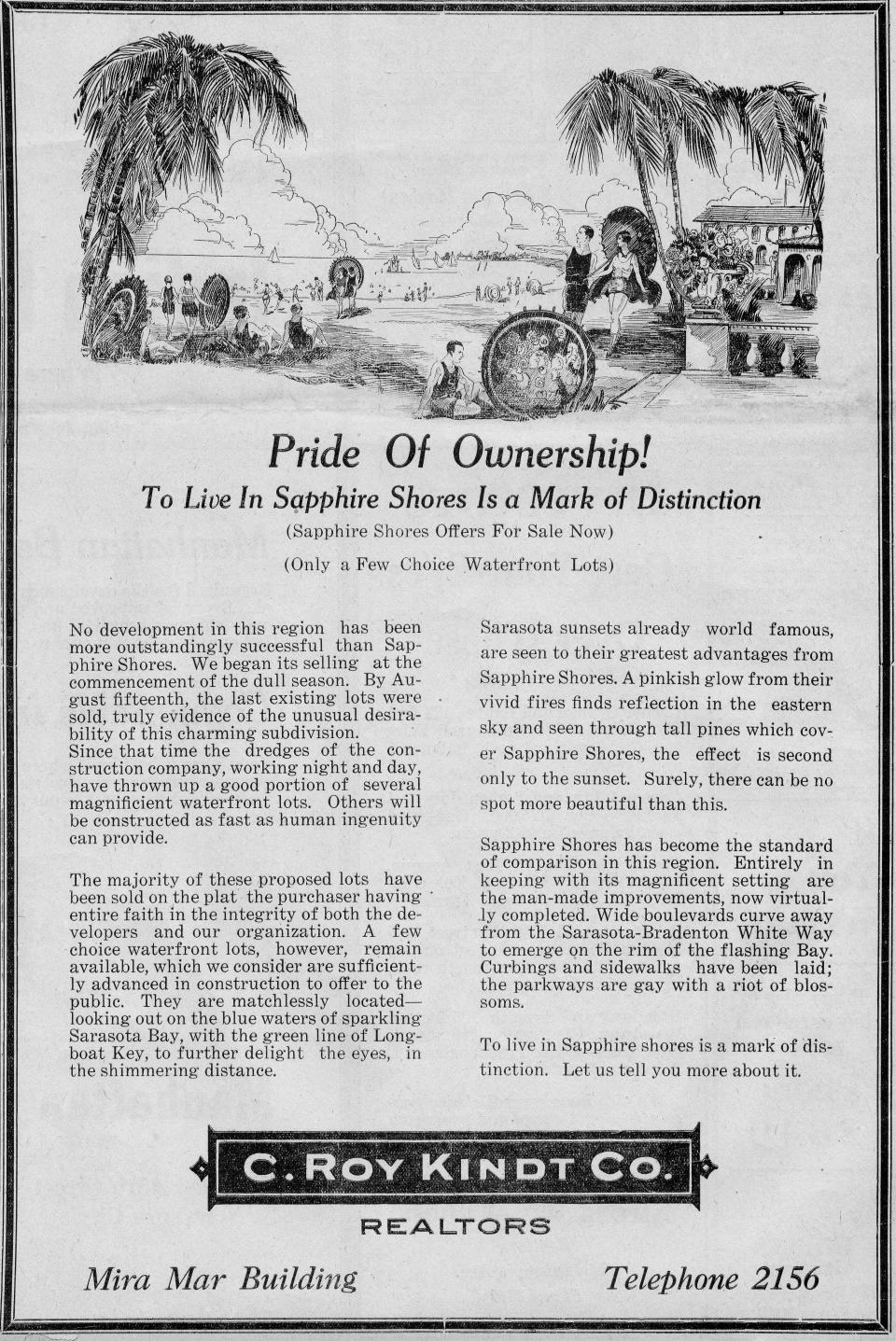
Sapphire Shores offered housing lots of “Compelling Charm For A Favored Few.” Another full page assured, “To live in Sapphire Shores is a mark of distinction. Let us tell you more about it.”
Indian Beach, “Where Dreams Become Realities,” was successful in keeping prices low because “Desirability Created The Demand [and] Demand Made Possible The Price.”
Aware that many buyers were here to speculate, an ad by the Manhattan Bond & Mortgage Co. advised, “Start Building Your Fortune by Buying at Indian Beach Estates!” Speed was the name of the game, “Buy now before prices advance. Buy now and start a fortune.”
Lots, or rather binders on lots, sold several times in a day, each sale escalating in price. It was reported that some lots on Golden Gate Point sold seven times, adding credence to the money-making possibilities.
Among get-rich headlines: “Price Climbing, let your profits go up with the climb.” “Values constantly enhancing.” “An opportunity for big profits.”
Act quickly. As Sylvan Shores, “Autocrat of All Homesites,” warned, “Twelve hours is ancient history in Florida real estate.” And the Roger C. Rice Company asked “How Does your Brain Work? They cautioned, “You’ve got to think, and quickly in these days in Florida.”
Indeed, prices were escalating dramatically. As examples, the Sarasota Herald chronicled one set of transactions this way: In 1923, 24 lots were sold on 9th Street [today’s 3rd Street] for $66 each. In 1925, eight of them sold again for $45,000 each, and the other 16 were sold for $600,000.”
New construction was another sign-certain of a city’s success. As This Week In Sarasota put it, “Sarasota’s New Buildings Give Prosperity Visibility.”
A splendid example of this, the formidable looking 150-room El Vernona Hotel opened in 1926, and admired for its unique Moorish architectural style. Designed by Dwight James Baum and built for Owen Burns, the Sarasota Herald wrote that the hostelry was, “Almost startling in its magnificence, brilliant in its glory and fairly taking one’s breath with the simple grandeur of its appointments.” Nicknamed The Aristocrat of Beauty, the paper reported that it was “more pleasing to the eye than any hotel among Florida’s palatial ones.”
Even street names were embellished. In 1915, roads from the Midwest to the South were patched together to form an access to Florida known as the Dixie Highway, which was colorfully designated “the string upon which Florida has strung her jewels.”
Locally, the narrow two-lane road from Sarasota to Venice was only nine feet wide, requiring oncoming vehicles to pull off to allow the other to pass by. This vast improvement was dubbed the “Velvet Highway.”
During the Roaring ’20s the automobile became a must-have possession. And while Chevrolet advertised that as of 1925 they had sold their two millionth car and bragged that the Chevy provided “QUALITY AT LOW COST,” the ever-popular Ford promised its latest edition was, “New and Improved” and Marmon touted its “strong chassis and easiest riding quality of any car, domestic or imported,” The Jordan Motor Company took a different, more colorful approach to selling motorcars.
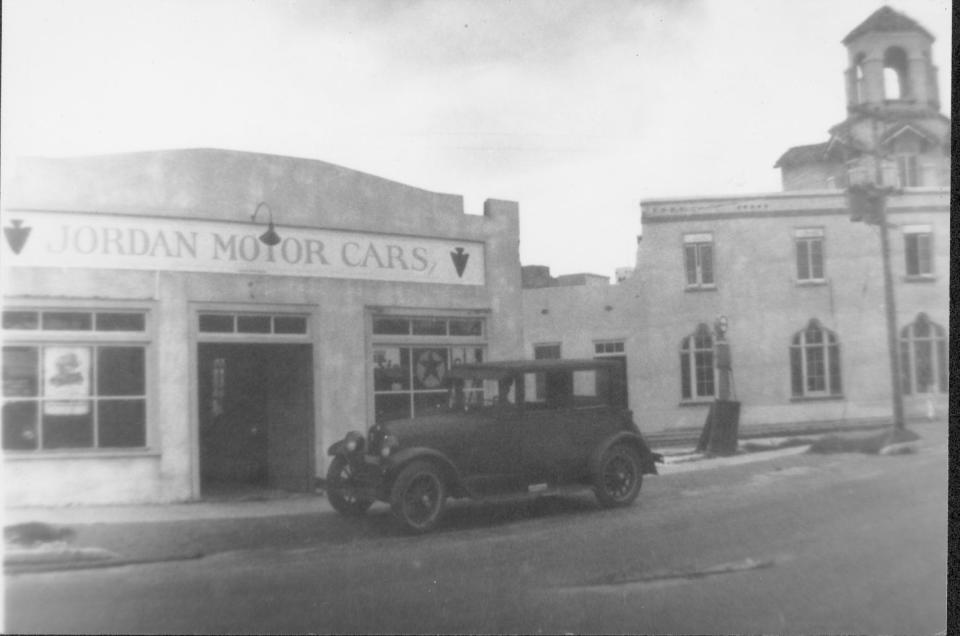
Throughout this Great Gatsby era of excess, no other automobile manufacturer epitomized colorful prose more than the Jordan Motor Corporation, whose Sarasota showroom was on South Pineapple Avenue.
Manufacturer Ned Jordan began a series of advertisements which were said to have brought him more fame than the car itself.
Known as “image advertising,” one of the most lyrical of these:
Somewhere west of Laramie there’s a bronco-busting, steer-roping girl who knows what I’m talking about. She can tell what a sassy pony, that’s a cross between greased lightning and the place where it hits, can do with eleven hundred pounds of steel and action when he’s going high, wide, and handsome. The truth is – the Playboy was built for her. Built for the lass whose face is brown with the sun when the day is done of revel and romp and race. She loves the cross of the wild and the tame.
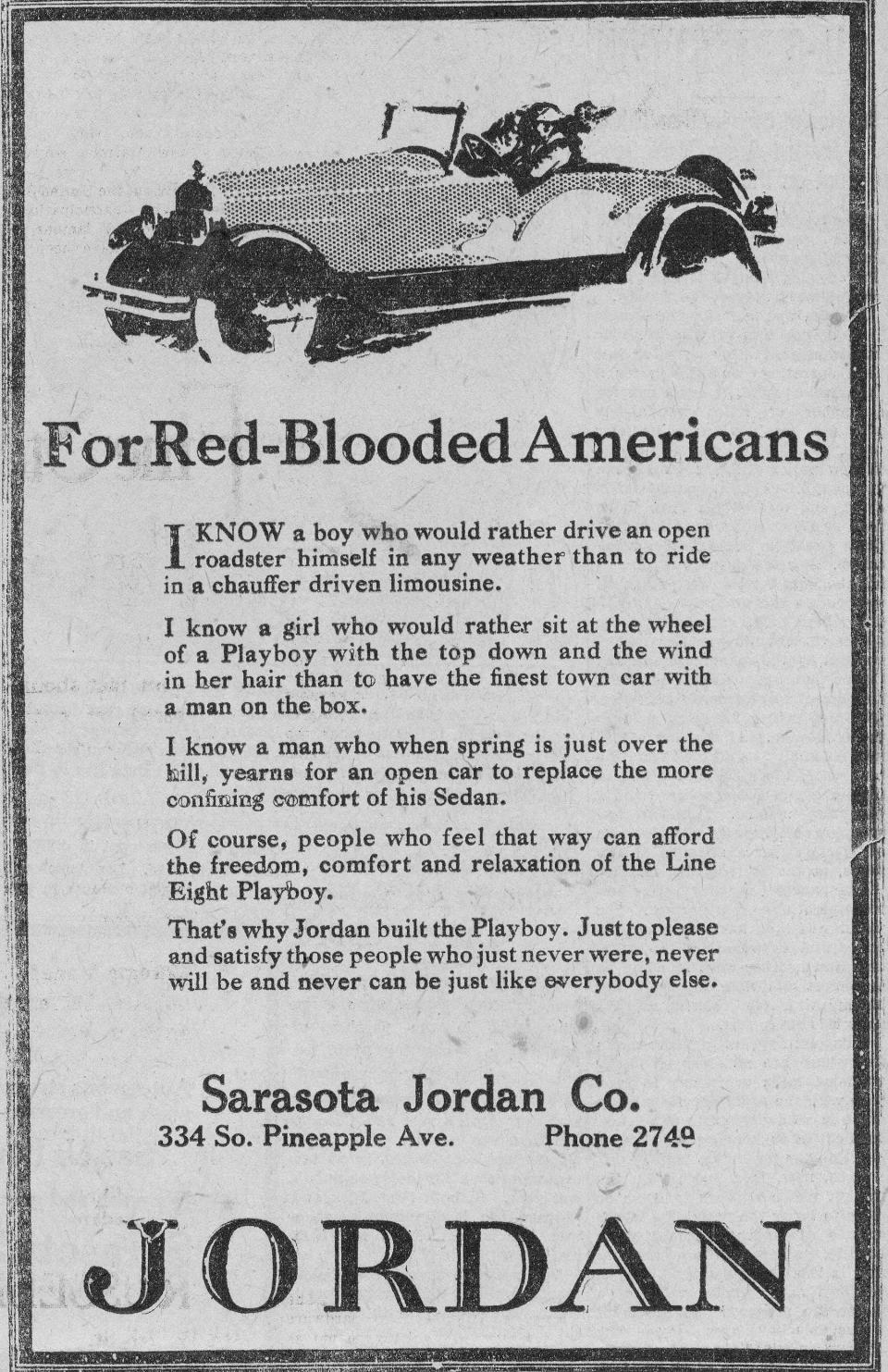
After producing such models as the Playboy, Tomboy, Blueboy, and a special order, Speedway Ace, each with its own colorful description, Jordan was forced to quit production in 1931 as the Great Depression collapsed his company, and many others as well.
Even as Sarasota was told that the ever-climbing real estate prices were not part of a real estate bubble, a bubble it was and even the most ardent and colorful advertising could not prevent the inevitable bust.
Of the lots selling at such escalating prices on Ninth Street, the Herald reported, “Nothing was ever put on them until many years later when they were sold for taxes.” The colorful real estate party was over; there was no glamorizing that.
Jeff LaHurd was raised in Sarasota and is an award-winning historian.
This article originally appeared on Sarasota Herald-Tribune: Sarasota History: In black and white era, words provided the color

